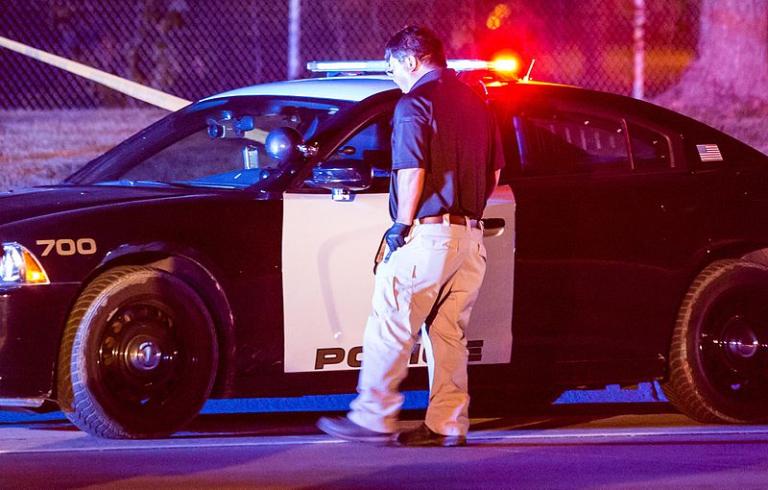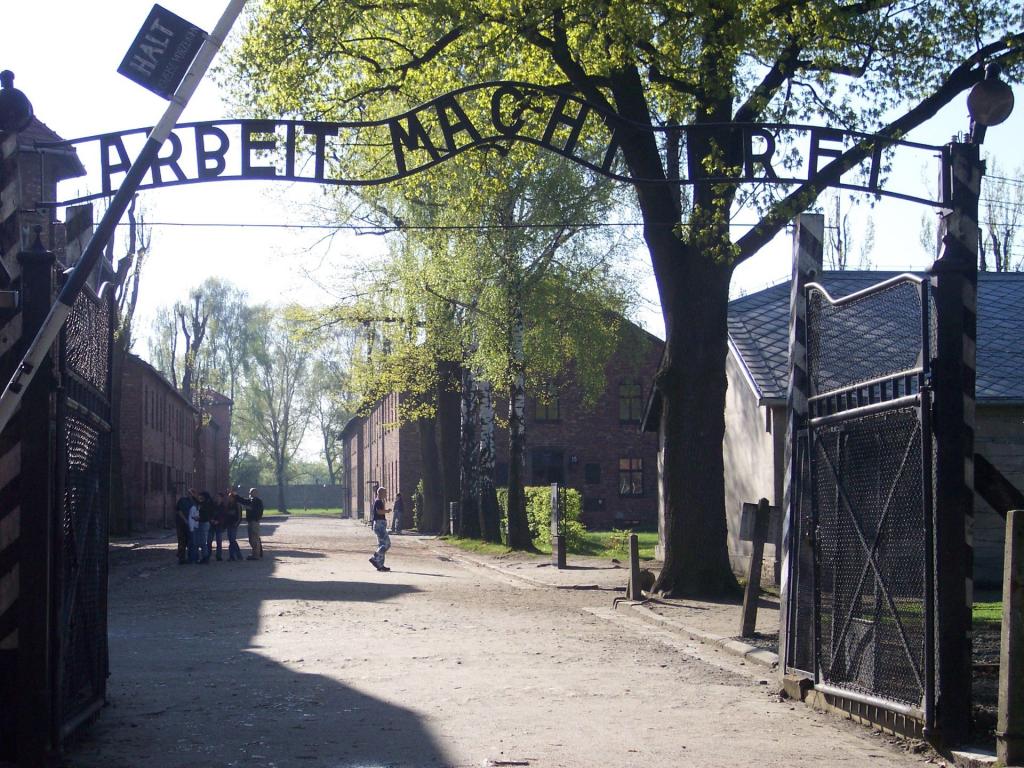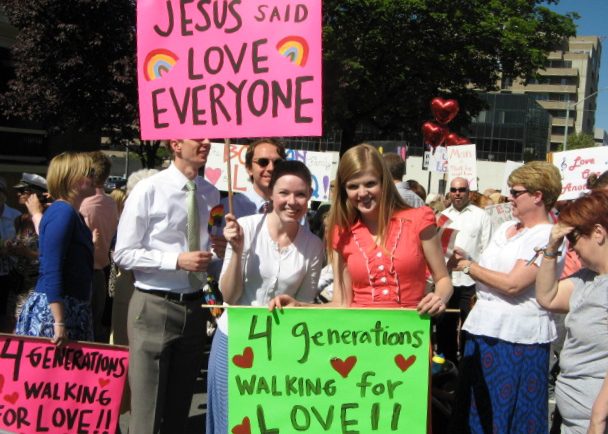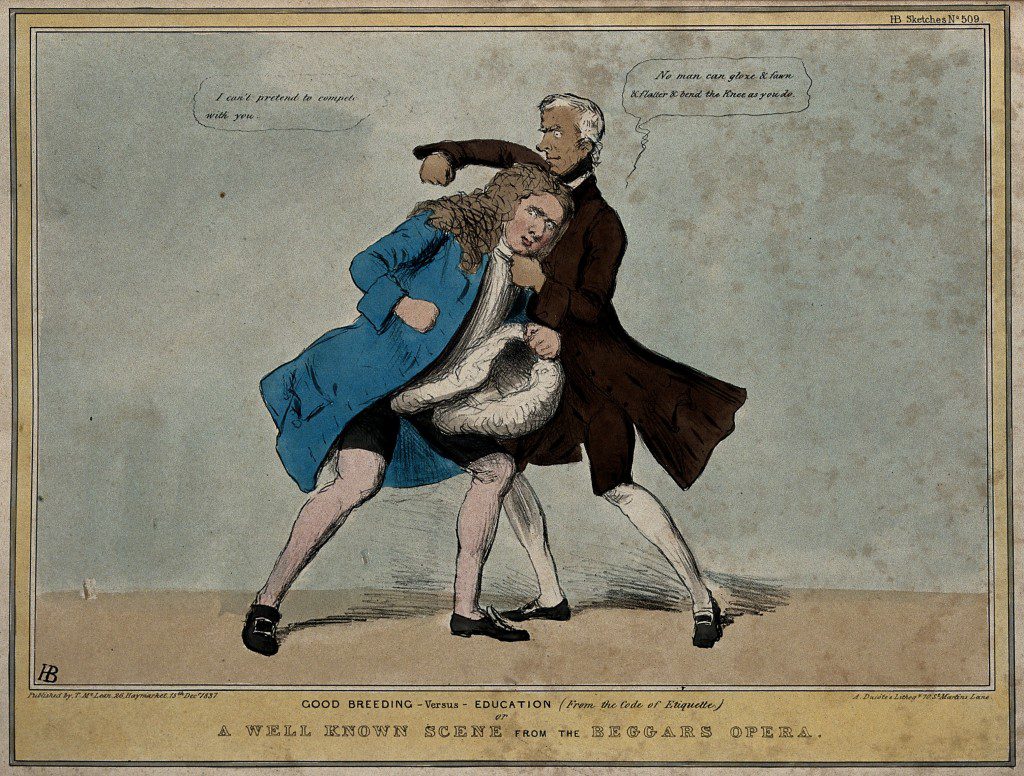
One
Cupich.
Two weeks ago, Cardinal Blase Cupich announced that the Catholic schools of the Archdiocese of Chicago would be responding to the George Floyd killing by including the item in its curriculum:
In an in-person interview at the rectory at Holy Name Cathedral, Cupich said the archdiocese’s goal is to have all Catholic school students participate in a discussion about Floyd’s killing and its aftermath.
“I think we need an educational piece in our parishes, in our schools, in our religious education,” Cupich said. “And we’re looking to put that together for this fall because racism is taught. Nobody is born with it.”
Cupich said the core of what the students would be learning is “a simple message.”
“This is not rocket science,” he said. “This is the Gospel. So, it’s bringing the Gospel to this issue.”
Sounds fine enough, doesn’t it? But how do you teach a kindergartner that a police officer in another city killed a man, without giving them the fear that they are to fear the police? That’s not as bad as teaching young students about the Holocaust, to be sure, but it’s a complicated, confusing lesson, especially if the word (or phrase) of the moment, “systemic racism,” is thrown in. An article yesterday described one mother’s observation of the New York City Public Schools’ anti-racism curriculum, which was, of course, not Gospel-oriented, but, well, given Cupich’s prior statement that the riots in Minneapolis were understandable and only to be expected, that the cure is a “fair legal system, equitable education and employment opportunities and ready access to healthcare,” and that we already know what to do and simply have to “take up the hard work” — I have doubts that anything Cupich-approved would be as simple as learning about the Gospel. At any rate, here’s the author’s take-away about her NYC experience:
My son learned that he is perpetuating the problem of racism, and that he doesn’t even know how he’s doing it, and that his whole family is racist, even if they don’t think they are. The kids also learned that there’s no way to fix it.
Two
The BSA.
Separately, the BSA sent an e-mail to all families yesterday. My initial reaction was that this is just one more instance of the endless e-mails coming from anyone I’ve ever had any contact with, with a repetition of the same corporate-speak as all the others. But they are making three changes; one is the usual name-changing routine (a few years back, the Order of the Arrow was already banned from using Indian-style costumes), and here are the three others:
- Introducing a specific diversity and inclusion merit badge that will be required for the rank of Eagle Scout. It will build on components within existing merit badges, including the American Cultures and Citizenship in the Community merit badges, which require Scouts to learn about and engage with other groups and cultures to increase understanding and spur positive action.
- Reviewing every element of our programs to ensure diversity and inclusion are engrained at every level for participants and volunteers by applying a standard that promotes racial equality and denounces racism, discrimination, inequality and injustice.
- Requiring diversity and inclusion training for all BSA employees starting July 1 and taking immediate action toward introducing a version for volunteers in the coming months.
A Diversity and Inclusion merit badge would be harmless enough – there’s already a Disability Awareness badge – but elevating it to Eagle-required status, not so much. In this world we inhabit now, I don’t trust that the designers of such a badge could come up with a set of requirements that’s activist-approved that are reasonable and appropriate for middle school boys in a diversity of circumstances. Requiring that “every element of [their] programs” must “denounce racism”? And requiring “diversity and inclusion training” for BSA volunteers? There is already a several-hours-long training required every two years for Youth Protection, and every troop/pack leader struggles to get every volunteer to do the training before the deadline. One might say, “well, of course volunteers should do this” but it is nonetheless true that it is a real roadblock to getting adult volunteers. To add more training requirements on to this might again, in isolation, seems like a good and right thing to do but YPT and D&I training are two different things — YPT isn’t merely about “don’t abuse kids” but active requirements to prevent abuse by others, such as following two-deep rules and understanding when children might be at risk from another adult. D&I training? It’s a checkbox — but a costly one. And, again, BSA is in the middle of bankruptcy proceedings. I get that it cannot risk being accused of racism, that the stakes are too high, that it needs a lot of cooperation from a lot of people to make it through bankruptcy in the best-case scenario which it promotes, as opposed to a version in which it is stripped of all its camps and can no longer function. But making families jump through anti-racism hoops will drive them away and destroy the program.
Three
Contact tracing hypocrisy.
Back in May, the governor put out his recovery/reopening plan. We’re currently in Phase 3 (which is really Phase 1, but he labelled the tightest lockdown as Phase 1 and the slight loosening — retail stores permitted to operate on a curbside pickup basis — paired with the mask mandate as Phase 2). It called for the implementation of contact tracing to move to Phase 3 and at the time he announced grand plans for a statewide program to start in late May. It further called for fully-implemented contact tracing — 90% of cases — to move to Phase 4. Later in May he changed his tune and said that individual county health departments were already doing contact tracing so that box was checked, and the state is just going to help those local departments, and even later he said that contact tracing isn’t actually a requirement for his Phases anyway.
But (you can read more at my JaneTheActuary.com article) both the city of Chicago and suburban Cook County have now announced that they will not even begin hiring contact tracers until August. This is well, well behind other states. Why? Because rather than hiring quickly, they are prioritizing hiring in a “social justice”-oriented fashion. The whole program is being treated as a “jobs program” primarily, so that hiring from economically-distressed areas is being prioritized, as well as hiring from the “groups hardest hit” (that is, blacks and Latinos). Activists are calling for Chicago tracers to be directly employed by the city rather than hired through community nonprofits, because they should swell the ranks of unionized workers. Now, I well understand that a contact tracer must be able to gain the trust of those they are working with, so that hiring with indifference to the ability to understand the life experience of those infected, is not particularly useful – but these delays go well beyond an effort to address those concerns to a level of indifference about the urgency of contact tracing, in service to “progressive” “social justice” economic goals, that is deeply irresponsible.
Four
Lockdown hypocrisy.
New York City, for example, remains under a lockdown in which large gatherings are banned. On Monday, city workers welded shut a playground which has been a flashpoint in conflicts in which the city has been tightly enforcing regulations against, and seemingly singling out, the city’s Hasidic Jewish community in Williamsburg. The day before, large crowds gathered for a “Black Trans Lives Matter” rally. Across the country, the very same politicians who stressed the urgency of staying at home, even at severe costs — families unable to hold funerals for loved ones, or visit with them in the hospital, climbing suicide rates, financial struggles beyond the ability of the government to wave away with a money-spigot — now insist that anti-racism protests are the sole exception to those lockdowns. I’m not going to recite the endless instances — you know they are there.
Five
“Black and Brown”
Is the word “black” to be capitalized when used with reference to people of sub-Saharan African origin?
I can see both sides.
On the one hand, abandoning issues of “race,” it is functionally a label for what you might call a super-ethnic group, at least when it’s with respect to individuals in the United States, and we consider ethnic group labels to be proper nouns, and in English, we capitalize proper nouns even when used as adjectives. (German would be easier – capitalize all nouns, capitalize no adjectives.)
On the other hand, it is still, grammatically, a color name, even if used metaphorically. We don’t capitalize color names.
But now even the Boy Scouts say that it “stands with Black families and the Black community.” Capitalization of that word has become a shibboleth, a necessary means of signaling that you’re right-thinking when it comes to the fight against racism.
And here are some excerpts from the Chicago Sun Times announcement on the matter:
On Monday, we joined the growing list of news organizations around the country that have opted to capitalize Black when using the word to describe a culture, ethnicity or community of people. . . .
We also instructed our journalists that in the event the terms Black and Brown are used together to collectively describe a group, we will capitalize the “B” in both words, such as “Black and Brown communities.”
Our decision puts Black on the same level as Hispanic, Latino, Asian, African American and other descriptors.
We also told our journalists to continue to lowercase the “w” in white.
Our decision to capitalize Black is an acknowledgment of the long-standing inequities that have existed in our country, and the unique role that Black art and culture have played in our society. Cultural trends among white people, e.g. Italian Americans, Irish Americans, etc., are much more disparate, which was a key factor in our decision not to capitalize white.
The first sentence I am fine with as a valid approach — “Black describes an ethnicity so it is capitalized.”
But the use “Black and Brown communities” belies this first statement. That’s merely a political statement: nonwhite individuals are oppressed so they are deserving of capitalization. After all, they are not a “group” — they are disparate groups whom activists seek to bring together in a common anti-racism effort. “Brown” people are deemed to include Hispanics/Latinos (that is, everyone immigrating from the South, regardless of whether they are pale or dark-skinned), North Africans and Middle Easterners (who may rail against or shrug off our government’s categorization as “white”), and Asians from across an entire continent, who don’t really have anything in common that would justify this claim that they are a “community of people” rather than a skin color — not to mention, of course, that “community of people” is not something that’s capitalized as a general rule.
And the last paragraph is the real whopper — “Our decision to capitalize Black is an acknowledgment of the long-standing inequities that have existed in our country.” And “white people have no common culture so that label isn’t capitalized”? Grammar is not about opinions on the worth of people — certainly not a declaration which attempts to lock-in a proclamation of the worthiness of some but not others.
Six
Cult.
It’s been said over and over again that the American nones, without a traditional religion, are re-creating a new religion for themselves, with their beliefs in environmentalism and social justice activism approaching religious intensity, and with growing enthusiasm about the supernatural — astrology, “Mother Earth” and the like.
An article in The American Conservative, “These Aren’t Protests, They’re Religious Ceremonies,” observed the ways in which the anti-racist protests were rapidly developing their own religious rituals, from kneeling, to prostration, to even footwashing of the black leaders by whites. The article reports,
The Guardian ran an article on how people must keep repeating the names of police victims, and protestors routinely chant a list of names as if it is a litany of the saints. It is a transparent attempt to transform the victims into martyrs.
And in precisely the manner of cults, an op-ed in the New York Times encouraged readers to cut off family members who refused to attend protests or make financial donations to activist causes.
Seven
Brainwashing.
An extended twitter thread, here captured in a single article, provided some history of China’s success in “brainwashing” its POWs during the Korean War.
Unlike the North Koreans, who “who favored savagery and harsh punishment to gain compliance,”
The Chinese were very effective in getting Americans to inform on one another, in contrast to the behavior of American POWs in WWII. For this reason, escape plans were quickly uncovered and escape attempts themselves were rarely successful.
When an escape did occur, the Chinese usually recovered the man easily by offering a mere bag of rice to anyone turning him in. In fact, nearly all American prisoners in the Chinese camps are said to have collaborated with the enemy in one form or another.
The Chinese achieved this, Zero HP Lovecraft writes, by starting small, for example, by being asked to make mild statements such as “The United States is not perfect,” but then, once these small pieces of compliance are gained, asking for more — listing out “problems with America,” for instance, in an essay which is then broadcast.
Suddenly he would find himself a “collaborator.” Aware that he had written the essay without any threats or coercion, a man would change his image of himself to be consistent with the deed and with the new collaborator label, resulting in more extensive acts of collaboration
The author also describes an approach of essay contests, ostensibly harmless, but actually insidious:
A similar technique involved political essay contests that were regularly held in camp. The prizes for winning were invariably small–a few cigarettes or a bit of fruit–but were sufficiently scarce that they generated interest from the men
Usually the winning essays took a pro-Communist stand, but not always. Most prisoners would not want to enter a contest that required writing a Communist tract. So the prize was sometimes given to essays that supported the USA but made small concessions to the Chinese view
The men participated voluntarily in the contests because they saw that they could win with an essay favorable to their own country. But perhaps without realizing it, they began to shade their essays a bit toward communism in order to have a better chance of winning.
The Chinese wanted as many Americans as possible to enter these contests so that, in the process, they might write things favorable to the Communist view. If, however, the idea was to attract large numbers of entrants, why were the prizes so small?
They chose to employ the smaller rewards because they wanted the men to own what they had done. No excuses, no ways out were allowed. A prisoner who salted his political essay with a few anti-American comments could not be permitted to shrug it off as motivated by a big reward.
It was not enough to wring commitments out of their men; those men had to be made to take inner responsibility for their actions. We accept inner responsibility for a behavior when we think we have chosen to perform it in the absence of strong outside pressures
Eight
Malaysia
For the second half of my actuarial-consultant career, I worked with two Malaysian-immigrant men, one after then next. Both had come here for college, then stayed to seek employment. My employer was very happy to hire under such circumstances and considered the requirement that they only seek H-1B visas if they couldn’t find suitably qualified Americans to be a bit of paperwork complied with — but, to be fair, perhaps it has gotten harder to hire junior pension actuaries, given the state of private sector Defined Benefit plans. At any rate, with respect to one or the other of them, I recall a conversation about leaving Malaysia: his family was well-off enough that it wasn’t a matter of seeking to improve his lot in the United States, but they were (both of them) ethnically Chinese in a country in which the Chinese had always been the prosperous immigrant merchants and businessmen, and ethnic Malays (the majority ethnic group but the least wealthy) had instituted Affirmative Action laws which include wide-ranging quotas. A 2017 Economist article explains:
Although the NEP’s authors believed affirmative action would be needed for only 20 years, the practice has continued ever since, as such “temporary” policies typically have in other countries. Malaysia’s bumiputeras, which means “sons of the soil” and which refers both to Malays and to a number of indigenous groups deemed deserving of a leg-up, have accumulated a panoply of privileges. Some of these are enshrined in legislation; others are left unwritten. These include quotas for places at public universities; preferment for government jobs; discounts on property purchases and access to a reserved slice of public share offerings.
Since the NEP’s inception Malaysia’s economy has grown enormously. Its people are now the third-richest in South-East Asia, behind only Singapore and oil-soaked Brunei. Affirmative action has helped to narrow the difference between the incomes of Malays and other races. But pro-bumiputera schemes are almost never means-tested, so their benefits have accrued disproportionately to already wealthy urbanites, allowing poverty among the neediest Malays to persist.
Meanwhile the lure of the public sector—which was expanded to create more posts for bumiputeras, and in which Malays are now vastly over-represented—has sapped entrepreneurial vigour among Malays, as has a welter of grants and soft loans for bumiputera firms. Race-based entry criteria have lowered standards at Malaysia’s public universities; so has the flight of non-bumiputera academics who sense that promotions are no longer linked to merit. These days Chinese and Indians largely end up studying in private institutions or abroad, in effect segregating tertiary education. Many of those who leave the country do not return.
Where are we headed, with the increasingly-loud calls to end “systemic racism”? The very phrase troubles me, claiming as it does, in its various incarnations, that any system which does not actively undo prior discrimination is racist, or that any system in which equality of outcome is not guaranteed is racist. People are using the phrase to call for fully-government-paid healthcare, or fully-government-paid tertiary education, or direct government grants for home down payments specifically for individuals whose ancestors were slaves. (I’m not sure, in these demands, whether middle-class black families are erased, or whether it’s presumed that they should get their share as well.) Anti-racism activism is demanding that we all become far more race-conscious.
And, no, that’s not going to end well.
Image: own photograph. Yes, sometimes I just scroll through the ol’ WordPress photo library. It’s a sunset from our vacation last year. Think of it as symbolic if you like.













